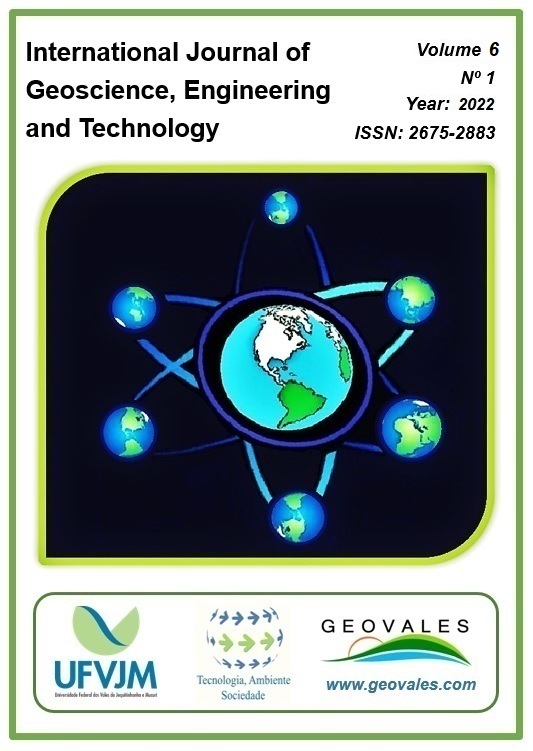Predicting the failure of institutions based on qualitative parameters using Bayesian Networks
DOI:
https://doi.org/10.70597/ijget.v6i1.490Keywords:
Bayesian Networks, Bankruptcy, Netica, OrganizationsAbstract
In the year 2020, the situation took dramatic contours for companies and entrepreneurs. With the COVID-19 pandemic, bankruptcy filings increased by about 12.7% compared to the previous year, and in addition, it was the first increase since the 2016 crisis. In this scenario, it is necessary to predict the bankruptcy of companies to anticipate actions and minimize the effects. The present work uses a tool known as Bayesian Networks, which is based on graph theory and probability theory to model an uncertainty scenario. The Network for the proposed study was manually modeled through the use of Netica, consequently, it was possible to obtain satisfactory results through the analysis of some sectors within the institutions. With the help of the tool, it was possible to predict the bankruptcy based on qualitative parameters of specialists, analyzing the risks that can result in the failure of organizations.
References
Altman, E.I., 1968. Financial ratios, discriminant analysis and the prediction of corporate bankruptcy. The Journal of Finance, 23(4), pp. 589-609. https://doi.org/10.2307/2978933
Altman, E.I., 1977. O Modelo Z de Falência - Uma Análise Retrospectiva e Prospectiva. Revista Brasileira de Mercados de Capitais. Rio de Janeiro, pp. 401-431.
Altman, E.I., Baidya, K.N. and Dias, L.M.R., 1979. Previsão de problemas financeiros em empresas. Revista de Administração de Empresas, 19(1), pp. 17-28. https://doi.org/10.1590/S0034-75901979000100002
Beaver, W.H., 1966. Financial ratios as predictors of failure. Journal of Accounting Research, 4(3), pp. 71-111. https://doi.org/10.2307/2490171
Dua, D. and Graff, C., 2019. UCI Machine Learning Repository. Irvine, CA: University of California, School of Information and Computer Science. Disponível em: <http://archive.ics.uci.edu/ml> [Acessado 1 agosto 2022].
Fernandes, A.M.R., Zapelini, C. e Comuello, E., 2012. Rede Bayesiana para Detecção da Intensidade da Dor. In: Simpósio de Excelência em Gestão e Tecnologia, Tecnologia da Educação.
Hammond, T.R. and O’Brien, C.M., 2001. An application of the Bayesian approach to stock assessment model uncertainty. ICES Journal of Marine Science. Oxford University Press, 58(3), pp. 648–656. https://doi.org/10.1006/jmsc.2001.1051
Hart, O., 2000. Different approaches to bankruptcy. Discussion paper 1903, Harvard Institute of Economic Research, in Social Science Research Network. Disponível em: [Acessado 2 agosto 2022].
Heckerman, D., 1995. A bayesian approach to Learning Causal. Technical Report Msr-Tr-95-04. Microsoft Research. Disponível em: <https://www.microsoft.com/en-us/research/publication/a-bayesian-approach-to-learning-causal-networks/> [Acessado 2 de agosto 2022].
Jensen, F.V., 1996. An introduction to Bayesian networks. [S.l.]: UCL press London. v.210.
Kumar, P.R. and Ravi, V., 2007. Bankruptcy prediction in banks and firms via statistical and intelligent techniques–A review. European Journal of Operational Research, 180(1), pp. 1-28.
Luger, G.F., 2004. Inteligência Artificial: Estruturas e estratégias para a solução de problemas complexos. 4th ed. Porto Alegre: Bookman.
Marques, A.F., 2014. Aplicação de clusterização de dados na base de dados do zoneamento ecológico-econômico de Minas Gerais. 88p. Monografia (Bacharelado em Sistemas da Informação) - Universidade Federal de Lavras, MG.
Mário, P.C., 2002. Contribuição ao estudo da solvência empresarial: uma análise de modelos de previsão – estudo exploratório aplicado em empresas mineiras. São Paulo. Dissertação (Mestrado em Controladoria e Contabilidade). FEA – USP.
Mário, P.C. e Aquino, A.C.B., 2004. Falências. In Iudicibus, S. e Lopes, A.B. Teoria avançada da contabilidade. São Paulo: Atlas, pp. 186-232.
Meirelles, A.M, Gonçalves, C.A., e Almeida A.F., 2000. Uma abordagem para estratégia utilizando analogias. In: Encontro Nacional da Associação de Pós-graduação em Administração. Florianópolis. Anais Florianópolis: ANPAD.
Nagarajan, R., Scutari, M. and Lèbre, S., 2013. Bayesian networks in R. Springer, v.122, pp. 125–127.
Nassar, S.M., 2003. Sistemas Especialistas Probabilísticos - Notas de Aula. 69p. In: Curso de Pós-Graduação em Ciência da Computação, UFSC.
Ohlson, J.A., 1980. Financial Ratios and the Probabilistic Prediction of Bankruptcy. Journal of Accounting Research, 18(1), p.109-131. https://doi.org/10.2307/2490395
Pearl, J., 1988. Probabilistic Reasoning in Intelligent Systems. Morgan Kaufmann, San Mateo, CA.
Rafiei, F.M., Manzari, S.M. and Bostanian, S., 2011. Financial health prediction models using artificial neural networks, genetic algorithm and multivariate discriminant analysis: Iranian evidence. Expert Systems with Applications, 38(8), pp. 10210-10217. https://doi.org/10.1016/j.eswa.2011.02.082
Robinson, S., 1995. Manual de Gestão Financeira. Edições CETOP, Mem Martins.
Russel, S. and Norvig, P., 2003. Artificial Intelligence a Modern Approach. 2nd ed. Upper Saddle River, New Jersey: Prentice Hall.
Russel, S. e Norvig, P., 2004. Inteligência Artificial. 2nd ed. Rio de Janeiro: Elsevier.
Shumway, T., 2001. Forecasting bankruptcy more accurately: A simple hazard model. The Journal of Business, 74(1), pp. 101-124. https://doi.org/10.1086/209665
Turing, A.M., 1950. Computing Machinery and Intelligence. Oxford University Press, Mind, New Series, pp. 433-460. Disponível em: <http://mind.oxfordjournals.org/cgi/doi/10.1093/mind/LIX.236.433> [Acessado 30 julho 2022].
Witten, I.H., Frank, E. e Hall, M.A., 2011. Data Mining: pratical machine learning tools and techniques. Massachusetts: British Library.
Zmijewski, M.E., 1984. Methodological issues related to the estimation of financial distress prediction models. Journal of Accounting Research, 22, pp. 59-82. https://doi.org/10.2307/2490859
Downloads
Published
How to Cite
Issue
Section
License
Copyright (c) 2022 International Journal of Geoscience, Engineering and Technology

This work is licensed under a Creative Commons Attribution-NonCommercial-ShareAlike 4.0 International License.
All articles published in this journal are licensed under a Creative Commons Attribution-NonCommercial-ShareAlike 4.0 International.












